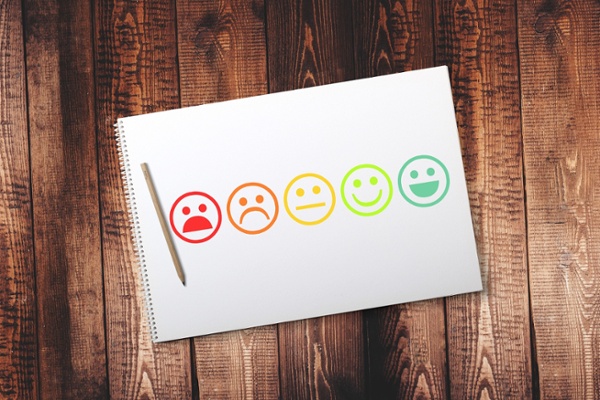Design Thinking: What is its importance in the customer experience?
We face challenges that test our creativity and ingenuity every day, so we must generate ideas to address various challenges. However, only some of...
Have you ever had at least one lousy purchase in your life, not because what you buy is not of quality, but because of the experience during the process? For example, we have no way of knowing if the product is sold in the store, so we call or go to the place, the seller attends to us reluctantly and gives us little or no information about it; if we find what we are looking for, during the purchase, we just want to get home.
But have you ever had a good purchase? You find the same product on the store's website, see videos of other people using it, and get excited. You get to the store, and you are attended by a salesperson who seems to become friends while they talk to you about the product or give you recommendations. During the purchase, they give you a discount for being the first purchase, and you are not only happy for getting what you were looking for but because the attention and detail during the process cheered you up for a moment.
Two different stores, same product. I don't think you need to ask where you would go back if you had to buy another product. While we can't ensure that our customer knows how to search for the product or that all salespeople know how to communicate well with all buyers, you can design your processes so that the customer always feels that you care about their experience. This is the power of Customer Experience, and by understanding it, you can work magic in your business.
Index
What is Customer Experience?
How can it be measured?
What is Customer Experience Design?
Why is it essential to design a good customer experience?
What is Customer Experience?
When a person wants to buy a product or service, either physically or through digital platforms, it is incorrect to think that the process starts from the purchase. Quite the contrary, there's a need that led the customer to perform a search and possibly find one or more options to compare. We can safely say that this person got advice on the internet, talked to friends and acquaintances, or communicated directly with sellers before analyzing which option was the best. Then made the decision, received the product or service, left his feedback, or made a claim.
Depending on the situation, the process can take minutes or months and have more activities or go directly from search to purchase. The critical thing to understand is that this is the summary of a Customer Journey, a set of moments of truth in which a customer comes into direct or indirect contact with our company. The "Customer Experience" is how our customers rate their level of satisfaction with our brand during their Customer Journey.
This concept should not be confused with the "User Experience" since it only evaluates the customer's perception when using our products or services, i.e., this is only a tiny part of the "Customer Experience."
I recommend you review concepts such as the Customer Journey as it is a fundamental piece in designing a good "Customer Experience." Here is a blog about it: Customer Journey: Build the best customer experience.
How can it be measured?
Analyzing the Customer Journey of each Buyer Persona is essential to understanding our customers' buying process stages. Once we have identified this path, we must put ourselves in their shoes and ask ourselves, "what would I like?" By knowing what we expect from each stage, we can be critical and self-evaluate to know if, as a company, we have a way to meet or exceed these expectations.
Based on the above example, we could ask ourselves:
When searching for a product or service on the Internet, did we find it easy to find it?
Was all the information we wanted to know available on our website?
Do we have the right platforms for our customers to contact us?
Do our sales agents have good communication with customers?
Do we offer delivery options?
Do we deliver the product/service as agreed?
Do we have a complaint handling process?
As you can see, you must perform the exercise of diagramming the Customer Journey of your Buyer Personas and make sure to include information such as the buyer's questions at each stage and what their frustrations and expectations are. This way, you can measure how prepared your company is to serve them and identify opportunities for improvement to generate value and provide them with a better experience.
It is essential to identify the critical Buyer Persona and thus understand for whom you are designing the experience; here is a guide on creating one: How to Create Detailed Buyer Personas for Your Business.

What is Customer Experience Design?
The "Customer Experience Design" is learning to design our processes strategically and focus on people. It takes advantage of all the data we have about the buyer to understand them and identify their frustrations, expectations, needs, purchase schedules, preferred communication channels, Etc... Thus, it designs processes that consider all this information.
Identifying opportunities for improvement in our process is an activity that is constantly made. Since the market is dynamic, Buyer Personas change, so make their Customer Journeys, which means that we must be flexible to adjust our processes and show our customers that we can understand them. Nowadays, we must realize that companies are controlled by their customers, they are the ones who demand time, quality, and good service, and they have many options in case any of their suppliers do not satisfy them.
If you want to learn more about Customer Experience Design, here is a link with much information: Understanding Customer Experience Design's Holistic Approach to CX Strategy.
Why is it essential to design a good customer experience?
As you can deduce, offering a good experience relates to business growth. If your customers are happy, there is a high possibility that they will buy from you again. In addition, they are also likely to share their experience with their friends and acquaintances, becoming promoters of your brand.
Remember the campaign of this famous beverage brand that printed lots and lots of names on the bottle labels? People bought the drink just by seeing their names or friends or family members. This brand gave its customers more than just a product; it provided an experience. This aspect caused many people to take pictures of the product and post them on their social networks, becoming free advertising and saving the company millions of dollars.
>> Blog: Introduction to the Customer Journey <<
Even if you think we are only talking about "User Experience" here, there may be much more to it; think of it this way. You see the photo on social networks, and you have a need that you didn't have, you look for where to buy it, and in the first link you locate the stores, you go to the store, and from the outside, you see the product in the window, you go in to buy it, and you are ready to enjoy it or give it to a friend. Although the taste is the same, there is something different. This whole Customer Journey exists so that at each stage of the process, you are experiencing other positive emotions. Surprise when you discovered it, intrigue and uncertainty as to whether there was somewhere nearby where you could get it, excitement when you went to get it, and happiness or euphoria to have it and share it. It may seem like a relatively innocent change on a label. Still, many people did not buy it because it was a particular flavor, a staple, or considered it better than another. They bought it for the experience.
Additionally, many other benefits make more and more companies care about designing a good experience. I recommend you to read some of them on this website: Top 40 customer experience statistics to know in 2021.
Nowadays, the "Customer Experience" plays an essential role in the success of companies. End consumers are becoming more demanding and looking for more than just a product or a service. Learning about some of their concerns, expectations, and needs will guide you in designing your people-centric processes, which will significantly benefit your company in terms of sales, loyalty generation, and gaining brand advocates. Now that you are more informed on the subject start looking at how to apply this knowledge to your business.


We face challenges that test our creativity and ingenuity every day, so we must generate ideas to address various challenges. However, only some of...

If you have any knowledge of Business Model Canvas you will know that it is a powerful tool that helps you to structure the backbone of your...

1 min read
As a general concept, customer experience refers to the opinions and/or perceptions a customer has about a brand or company based on one or multiple...